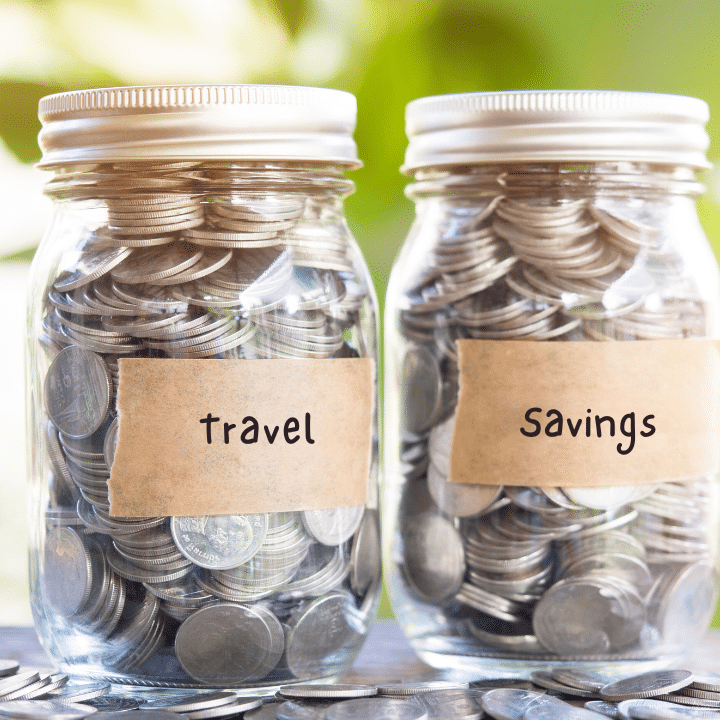
Can’t stop thinking about going to your next dream destination? Do you have the itinerary in mind, but are unable to take the leap of faith because of an empty (or near-empty) bank account?
We hear you. The allure of stepping out into foreign territory can be appealing to many, but this fantasy is often stomped on by the reality of a lack of financial capacity. What you need is a travel savings plan.
That said, life is short. Traveling is one of the best ways to destress and decompress from the hustle and bustle of daily life. If you want to spend a few days of a year in leisure, then there are ways you can plan to make that dream a reality.
One way to achieve that is by creating a separate fund for your travels. This fund refers to a set amount of money that’s specifically set aside for the singular goal of going out to travel.
Instead of simply holding on to the money in a vault at home, you can make your travel savings plan grow with you through various means.
When done right, you can create a system to earn money to fund your future travel goals as efficiently and passively as possible.
Ready your baggage, here are some ways you can craft a savings plan that grows with you.
1. Define clear destination goals

Defining clear destination goals is a prerequisite to having a successful travel savings plan. The world is a big place, and each travel destination requires ample pre-planning for you to fully enjoy the place without a hitch.
Furthermore, each place has different standard costs. This applies to food, accommodation, transportation, and tours. You’ll also have to take into account the flight cost of going to your dream holiday destination.
With all these factors in mind, it’s important to know where you’d like to go and for how long on your next trip. This helps you create an estimated cost plan, allowing you to preplan how much you need to save in advance.
Furthermore, prior research can also help you save more money by finding better deals, securing hotels and flights at a discount, and going on a trip during shoulder season. This makes your travel budget objective much more tangible and easy to reach.
2. Create a separate travel savings account

Creating a separate travel savings account helps you more systematically control the money you’re allocating for your next holiday.
When you combine personal and travel savings, this can blur how much money you can or cannot use for each activity. This confusion can cause you to overspend during your holiday (or penny-pinch).
Neither case is particularly good for you, so it’s important to take the time to create a separate bank account for your travel needs alone.
Furthermore, a separate account can also help you control your travel finances. Since you’re not using your travel fund so often, you can put it all in a time deposit or a term plan that compounds faster than traditional savings accounts.
The golden rule is that when you’re traveling, you shouldn’t compromise your non-travel-related budget goals. Traveling can be a major running cost, especially if you’re doing it over multiple days and supporting multiple dependents.
Click here to get an idea of how much money you should have in your personal bank account per age category.
3. Eliminate or manage debt

Another important factor to consider when crafting your savings plan is by lowering your monthly costs.
While expenses such as rent, groceries, and utilities are non-negotiable for independent adults, there are some debts that you can consider eliminating to pad up your savings.
For instance, if you’ve subscribed to monthly streaming services that you no longer use, cancel them immediately. These running costs are silent but steady ways to chip your savings capacity.
Another way to lower debt is by combining multiple debt streams into one, making it easier to manage. That said, you’ll need to qualify for such a scheme—so talk to banks and credit institutions about it and find the best rate.
By lowering your debt amount, you’ll have a higher monthly savings figure per month, which can ultimately help you grow your savings dedicated solely to your travels over time.
4. Use credit card points

You don’t need to set your travel savings to an exceedingly high number if you have a credit card.
In many cases, you can take advantage of credit card points to buy flight tickets, hotel stays, and even restaurant meals. This can help you “fund” your travel, allowing you to enjoy your holiday without draining your bank account.
That said, you’ll need the right travel credit card for the job. Be sure to scout around your local area and research which credit card offers the most travel perks that fit your needs.
Furthermore, be sure that you religiously pay your credit card on time. You don’t want to risk your credit score decreasing and your interest rate spiraling out of control. You can also really only enjoy these perks if you foster a good relationship with your credit card provider.
5. Create a passive income stream

Another way of growing your savings plan is by increasing your sources of income. While you can work on improving your career, another way to increase your income streams is by building a passive income channel.
There are many ways to go about this, and the amount you can potentially earn is proportional to how much capital you’re willing to pay to build such a stream.
For instance, you can build and rent out apartment complexes in your local area. You can also build businesses that are more passive, like selling courses of things you specialize in.
Conversely, if you don’t have as much capital just yet, you can start small and consider renting out vending machines or claw machines in high-traffic areas around your city or something similar. Embracing the laptop lifestyle can be a great way to add to your travel savings.
Do you have a Travel Savings Plan started yet? What is your favorite way to add to it?














